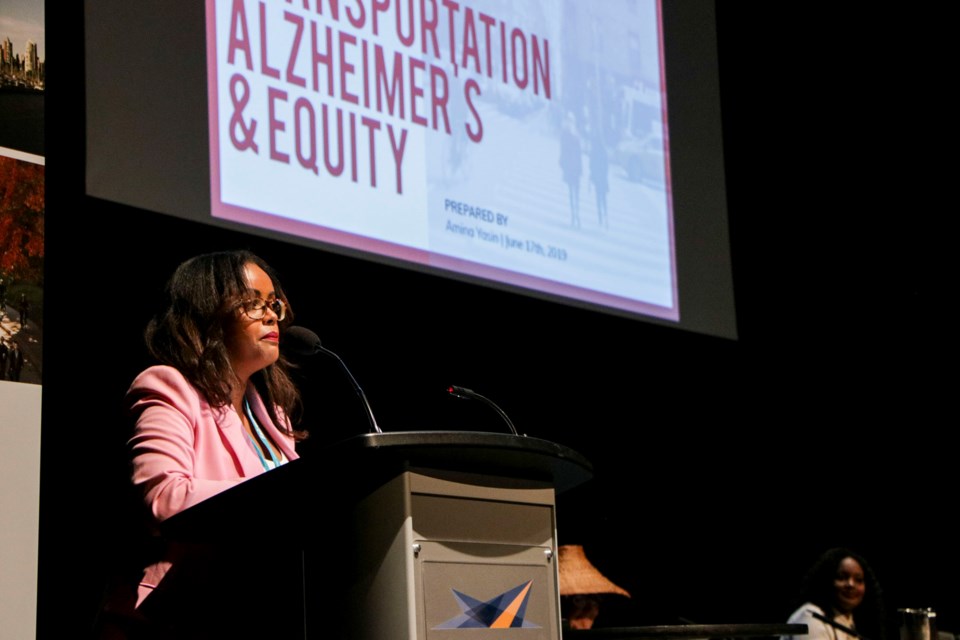Decades of city planning that has focused on cars make unsafe spaces for pedestrians and cyclists, particularly those with disabilities and impairments, conference attendees heard in New Westminster Tuesday.
The B.C. Active Transportation Summit was put on by the B.C. Cycling Coalition in the Anvil Centre in downtown New West this week, including a panel discussion Tuesday morning on inclusive active transportation.
Amina Yasin, co-chair of the Canadian Institute of Planners social equity committee, spoke on her own personal experience with her mother’s Alzheimer’s diagnosis and taking walks with her mother while caring for her.
“While taking these walks, I had a lot of time to think about mobility equity from the perspective of a daughter caring for her mother and as an urban planner,” Yasin said.
She spoke about crossing the street with her mother, with an angry driver blaring his horn and yelling at her and her mother for walking too slowly in a crosswalk.
“People like my mother and I weren’t thought of when designing the street. ... Traffic signals, as is the case with other automobile and road infrastructure, prioritize the movements of cars at the expense of human beings,” Yasin said, adding that infrastructure is not broken, but rather working exactly as designed.
Planning since the 1950s that prioritized cars over low-income neighbourhoods, Yasin said, were intended to cure cities of slums, which were typically the livelihoods of marginalized communities.
“Today, our automobile and major roadway infrastructure is making people sicker and having fatal consequences on our health,” Yasin said.
“Which public receives the benefit of this infrastructure, and which doesn’t? And who is this automobile and major roadways infrastructure mostly making ill?”
To truly revitalize those communities, Yasin said, including accommodating people with dementia and marginalized communities, city planners need to focus on accommodating active transportation for everyone.
Sarah Jama, of the Disability Justice Network of Ontario, spoke on making communities more livable for people with disabilities.
People with disabilities, she said, are often separated from the rest of society “because they aren’t seen as being able to be productive.”
“[We need to be] looking at and interrogating the history in our society that we have of literally saying people with disabilities don’t have the right to exist,” Jama said.
She added that people with disabilities, such as cognitive impairments, come into contact with police and experience poverty more frequently than the general population.
The larger issue, Jama said, is about the power that is given to institutions to decide who can and cannot exist in a certain public space.
To applause from the crowd, Jama urged those in attendance not to allow developers to be the ones to determine who can and can’t exist in public spaces.
She further urged those in attendance, many being city planners, not to rely on provincial and federal legislation as the bare minimum in accommodating people with disabilities.
“Go out to your communities … to see what they’re pushing on the ground, because they know more than you or your customers because they’ve been doing the work for years,” Jama said.
“All of these issues are connected, and it’s your responsibility to learn that; don’t wait for your councillor in order to learn about your community.”



